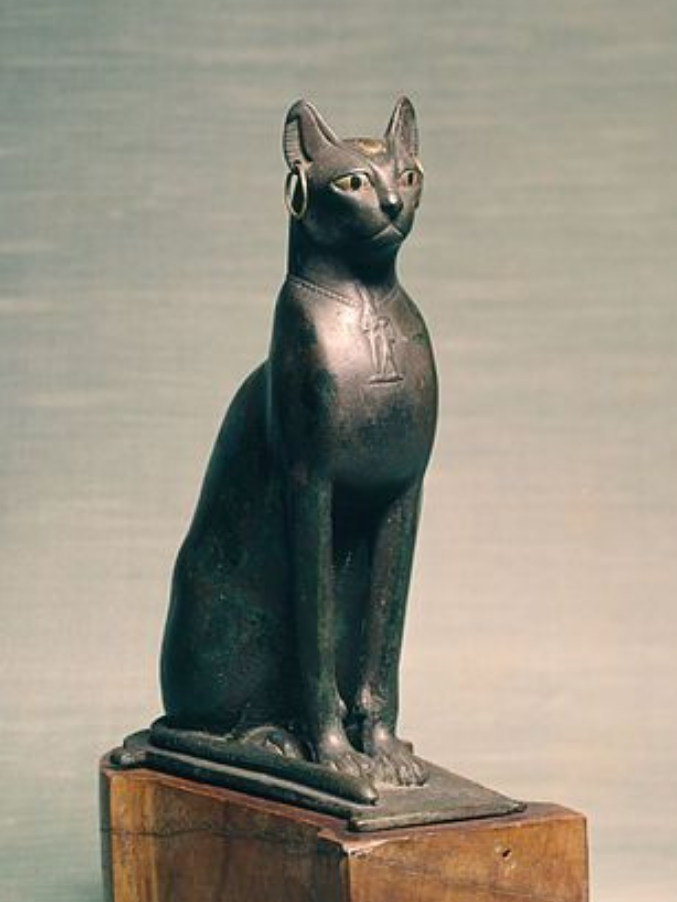A Short History Of Cats
A Short History Of Cats
History Of Cats
It appears to be bizarre that there was ever when cats were not a piece of our lives.
It's been under a long time since cats swaggered into our lives. Scarcely an eye flicker in the stupendous breadth of life on this planet. For what reason were cats so late to join our group? The basic answer is they didn't require us to endure.cats were enduring fine and dandy all alone. At that point,
individuals designed horticulture. Farming brought about huge scale stockpiling of grains which pulled in the typical and surely understand gathering of freeloaders, mice, and rodents. Grain pulled in rodents. Rodents pulled in cats who think of them as scrumptious suppers. The outcome was that cats set up housekeeping near human settlements. In the long run, cats being cats moved ideal on in.
if u wanna know (History Of Cats )Who were these first cats? The principal educates lies where agribusiness was first drilled. Horticulture originally flourished (no joke proposed) in the Middle East in an extraordinary scope from current Turkey to Egypt. Inside this territory extends the African wild feline,
It appears to be bizarre that there was ever when cats were not a piece of our lives.
It's been under a long time since cats swaggered into our lives. Scarcely an eye flicker in the stupendous breadth of life on this planet. For what reason were cats so late to join our group? The basic answer is they didn't require us to endure.cats were enduring fine and dandy all alone. At that point,
individuals designed horticulture. Farming brought about huge scale stockpiling of grains which pulled in the typical and surely understand gathering of freeloaders, mice, and rodents. Grain pulled in rodents. Rodents pulled in cats who think of them as scrumptious suppers. The outcome was that cats set up housekeeping near human settlements. In the long run, cats being cats moved ideal on in.
if u wanna know (History Of Cats )Who were these first cats? The principal educates lies where agribusiness was first drilled. Horticulture originally flourished (no joke proposed) in the Middle East in an extraordinary scope from current Turkey to Egypt. Inside this territory extends the African wild feline,
cat Libya. African wildcats are marginally bigger than our cutting edge house cats and are yellow in shading with quieted stripes. These cats have a submissive, nearly laid back nature.
Strikingly, these cats still will in general life and chase close human abodes today. Local people still prefer to catch and back youthful wildcats as pets. Whenever develop, wildcats raised by people will, in general, carry on especially like our natural housecats. An awesome case can (and has) been progressed assigning cat Libya as the chief establishing populace for residential cats. In any event, two different assortments of wild feline are theorized to have added to the hereditary cosmetics of residential cats. One is cat silvestris, The European wildcat who seems to have contributed darker markings and a peppery soul to the African wild feline base. Likewise, from Asia, comes the Pallas or Steppe feline (cat manul) that appears to
have contributed since a long time ago haired coats to the blend.
The early time of taming of cats is dubious with just fixes of proof.
In any case, by 6,000 B.C. statues found in Anatolia (current Turkey) show ladies playing with residential cats.cats had unmistakably turned out to be normal and friendly pets at that point.
The soonest composed records about cats show up by around 4,000 B.C. in Egypt where they were every now and again kept chasing mice and rodents from putting away grains. It was a decent time to be a feline in old Egypt. Local cats were believed to be the exemplification of the goddess Bast (or Bastet). There was a necropolis at her key sanctuary at Bubastis
that contained embalmed cats.
Romans spread the household feline northward into focal Europe and westbound to
England during the extension of their realm.cats was immediately embraced and appreciated as extraordinary trackers. (History Of Cats ) What's more, they kept on moving north and east in Europe. The Vikings utilized cars as both rat trackers and pets. The Viking goddess of affection and war, Freyja, was related to cats. Immense winged cats drew her chariot. It additionally turned into the custom to give new ladies a cat in her name.
The Middle Ages was an extremely terrible time to be a feline.cats were said to be witches familiars, allied with the villain. Due to this superstition, cats were routinely murdered during celebrations. Here and there they were even singed alive or lost tall structures. The
Europeans paid intensely for their brutality to cats. The passings of such huge numbers of cats enabled the rat populace to ascend wild, acquiring the Black Death which executed such a large amount of the European populace. In the long run, the cats' neatly ways and chasing ability recovered them according to the individuals of Europe. By the 1600s, individuals in France started putting little openings close to the base of their ways to enable their cats to enter and leave however they see fit.
In Asia, cats kept on being recognizable trackers and esteemed pets.cats were frequent subjects for attracting and painting China. In Japan, cats as Maneki Neko,
typically depicted as a sitting feline with one paw raised and twisted, are viewed as favorable luck. They are regularly found in organizations to attract cash.
The historical backdrop of cats is an entrancing one, deserving of a considerably more top to a bottom investigation. It encourages a thankfulness for the characters and abilities of our pets.
The antiquated Egyptian respect forecast is notable—and well-archived in the archeological record: researchers found acat burial ground in Beni-Hassan overflowing with 300,000cat mummies. Bastet, an Egyptian goddess of adoration, had the leader of acat, and to be indicted for executing acat in Egypt frequently implied a capital punishment for the guilty party.
Antiquated Romans held a comparative—though tempered and secularized—worship forecast, which was viewed as an image of freedom. In the Far East, cats were esteemed for the assurance they offered prized original copies from rodents.
For reasons unknown, notwithstanding, cats came to be slandered in Europe during the Middle Ages. They were seen by numerous individuals as being associated with witches and the villain, and many were executed with an end goal to avoid fiendish (an activity that researchers think amusingly spread the plague, which was conveyed by rodents). Not until the 1600s did the open picture of cats start to rally in the West.


Comments: 0
Post a Comment